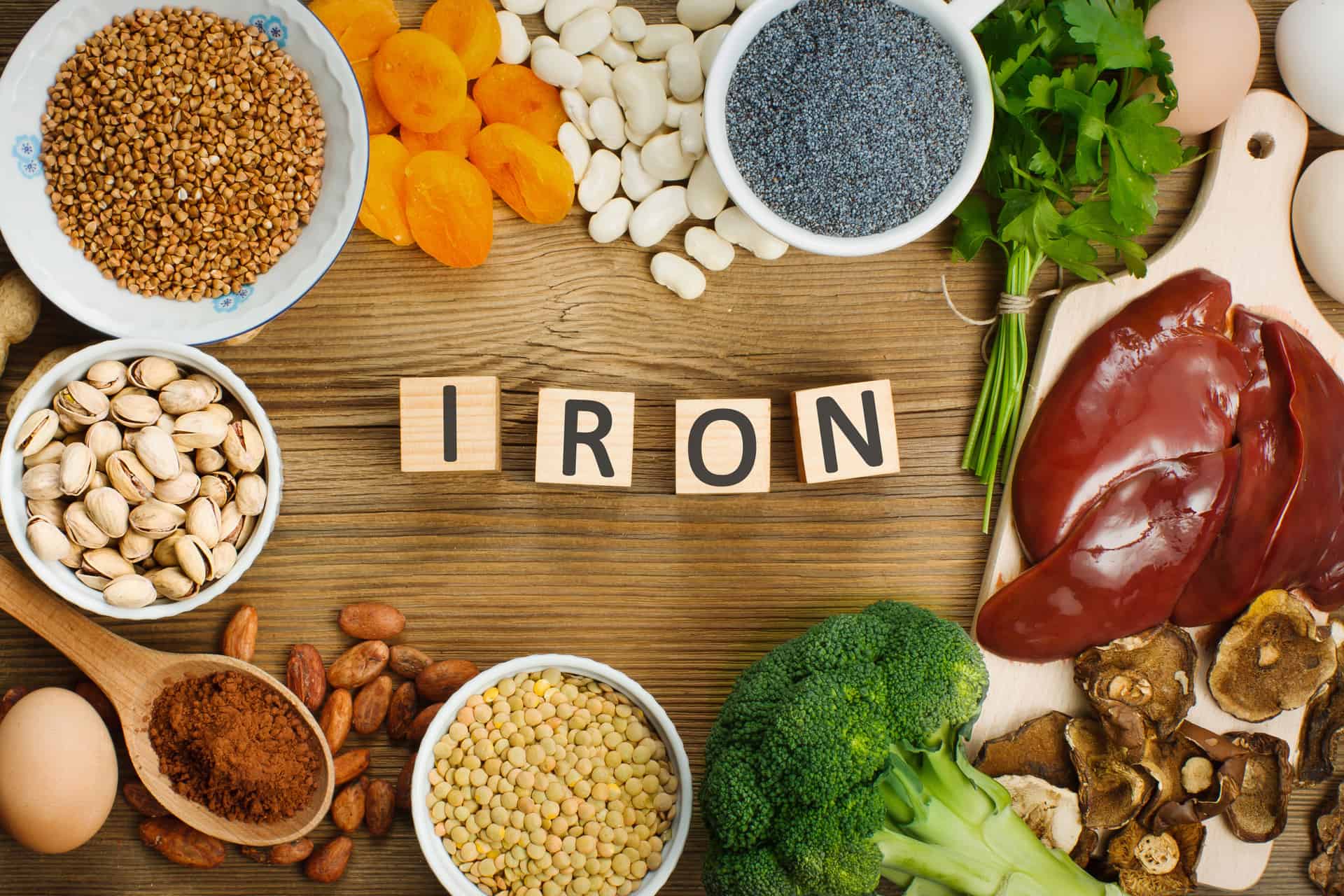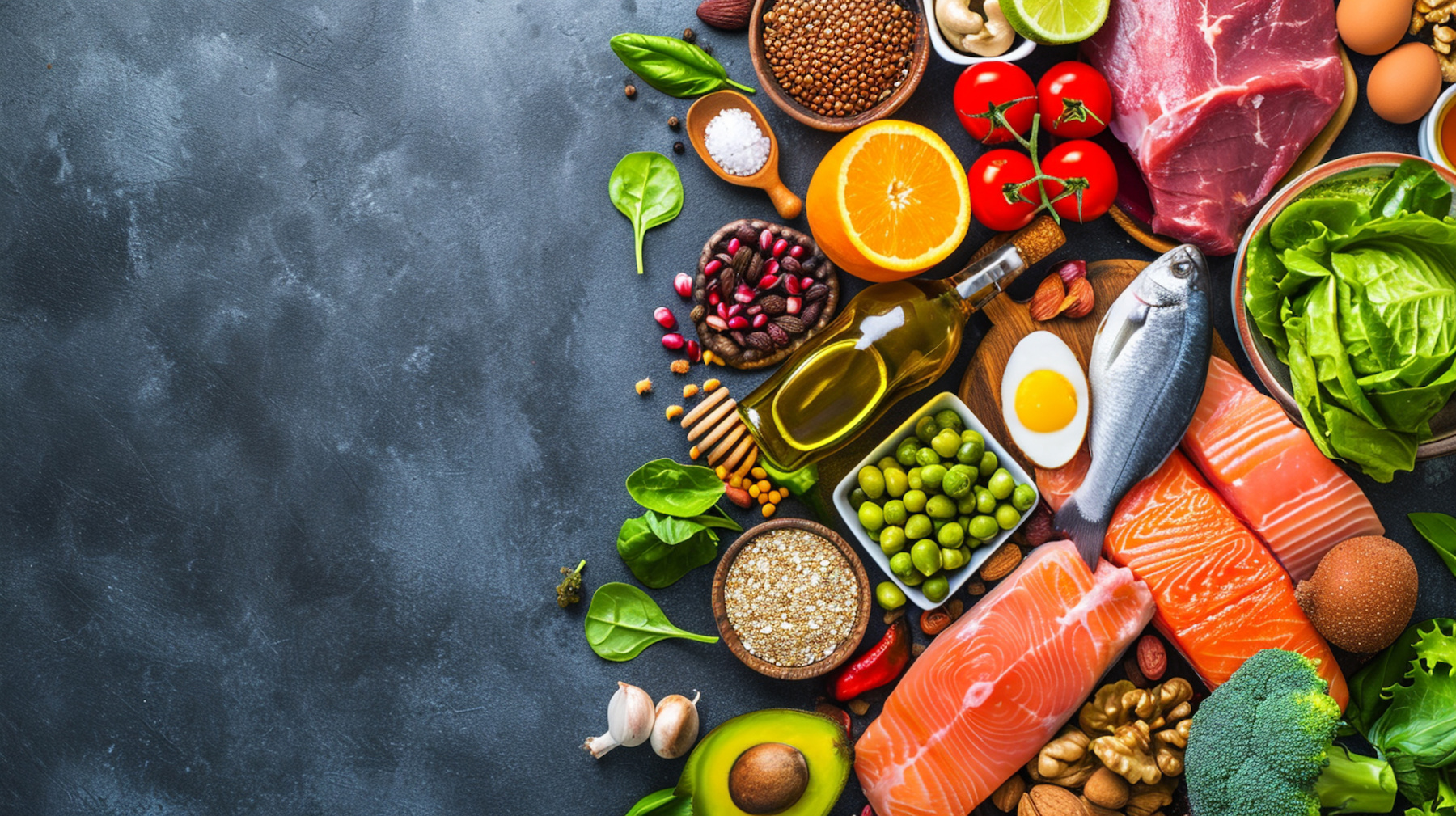

Your body is constantly regulating what comes in and what goes out every day. Iron is an essential nutrient you receive from your everyday diet. And your body has a checks and balances system in place to monitor how much iron is absorbed in your gut.
The hepcidin hormone regulates iron absorption in your digestive tract. When hepcidin level is abnormally high, such as in inflammatory conditions, serum iron falls because iron gets trapped in macrophages and liver cells and leads to decreased gut iron absorption. This can then lead to anemia (low red blood cells) due to not enough serum iron being available to make red blood cells. When the hepcidin level is abnormally low, as occurs in hemochromatosis, iron overload occurs due to increased ferroportin mediated iron efflux from storage (iron gets transported out from storage) and increased gut iron absorption. To summarize, too much iron in your system promotes an increase of hepcidin levels in your body to decrease iron absorption. And if you have low iron stores then your body decreases hepcidin levels to increase iron absorption.
Iron is a necessary mineral for transporting oxygen via red blood cells to your vital organs. It also supports proper immune function, the conversion of blood sugar to energy, and DNA synthesis.
Your body needs to tightly regulate serum iron because although iron is vital for basic bodily functions, too much of a good thing can also be a bad thing.
When this system of iron regulation fails due to hemochromatosis from genetic mutations or other environmental triggers it may cause chronic health problems. Hemochromatosis is when your body absorbs too much iron.
Although iron deficiency is more common, iron overload can have more damaging long-term health effects. This is why it’s important to take precaution of genetic defects and lifestyle behaviors.
What Causes Iron Overload in Your Blood?
Iron overload disorders such as hemochromatosis are when a person’s body absorbs too much iron from the food they eat.
Type 1 or hereditary hemochromatosis is a genetic disorder of one or two mutations on the HFE gene and is common among the Caucasian population. About 1 in 9 people of the European descent carry at least one mutation on the HFE gene. And even one mutation on this gene can cause iron overload in the blood and other serious health issues.
Other secondary hemochromatosis conditions which don’t present with the HFE genetic mutation, but trigger iron absorption include:
- Blood disorders such as thalassemia and sickle cell anemia
- Chronic blood transfusion therapy
- Hypochromic microcytic anemia
- Chronic liver diseases
- Overdose of iron supplements
- Dietary iron overload
- African iron overload
Symptoms of Iron Overload
Many times, iron overload is underdiagnosed because most doctors don’t officially diagnose you unless you have extremely high iron levels. This missed diagnosis can lead to some major health problems.
When you consistently have iron levels on the high spectrum this can lead to chronic inflammation in your body. And any low-grade or chronic inflammation in the body is a precursor to many chronic health conditions.
Results of ferritin (storage form of iron) lab values may vary among laboratories. But the optimal serum ferritin level ranges from:
- 30-100 ng/mL for women
- 30-200 ng/mL for men
Your ferritin levels can still be considered “normal” by some doctors if they lie between these numbers. Sometimes they wait until ferritin levels are reaching 1,000 ng/mL before taking action – but this is when major irreversible damage can occur.
Common iron overload symptoms include:
- Extreme fatigue
- Joint pain
- Decreased libido
- Palpitations
- Depression
- Abdominal pain
- Diabetes
- Liver disease
- Skin bronzing
- Mood changes
Being proactive about your numbers is important in preventing damage to your organs. Recognizing signs and symptoms of iron overload could help prompt you to get tested for hemochromatosis.
Too Much Iron Rusting Your Organs
Think of excess iron in your body as rusting your organs over a period of time. In some cases, you might not have an extreme excess of iron, but iron levels at the high range can eventually cause irreversible organ damage.
This is because iron overload can produce toxic reactive oxygen species which can damage the cells of your organs.
Iron overload can eventually lead to the following chronic health problems:
- Liver disease
- Diabetes
- Irregular heart rhythms
- Cardiomyopathy
- Arthritis
- Osteoporosis
- Alzheimer’s or dementia
- Gout
- Erectile dysfunction
- Cancer
Excess iron is stored in all of your organs, but ferritin is mostly found in your liver. This is why over 60% of patients with signs and symptoms of hemochromatosis can have abnormal liver functions which can lead to liver enlargement, liver fibrosis, and cirrhosis.
Treatment for Hemochromatosis
Since your body has no active pathways to secrete iron besides blood loss such as menstruation in women, iron can easily accumulate with iron overload disorders. An easy way to prevent iron overload is simple – assist your body in iron secretion by donating blood.
Since 70% of your iron is found in the red blood cells, treatment for iron overload starts with phlebotomy therapy. Phlebotomy is simply removing blood and therefore iron from your body.
Maintenance phlebotomy therapy is suggested every 2-4 months to prevent iron overload after ferritin levels reach a normal range.
Early treatment and identification of hemochromatosis can prevent damage to your organs and further complications.
Get Tested for Hemochromatosis
Your body has limited ways to excrete excess iron in your blood which is why it has such tight regulations of absorption in your gut. When these regulations are disrupted either from genetic mutations or other secondary triggers your body has trouble getting rid of this extra iron.
Unless you have an iron overload disorder you generally don’t have to worry about excess iron in your blood.
But if you do have high iron levels, you can reduce your risk of future health problems by:
- Reducing intake of iron-rich foods such as red meats and shellfish
- Donating blood regularly
- Cooking with turmeric for its antioxidant and iron binding effects
- Avoiding vitamin C supplements
- Reducing alcohol intake or completely avoiding alcohol if you have liver damage
- Avoid iron supplements unless recommended by your doctor
Working with a functional medicine doctor to help test your genes and ferritin levels can be the first step in preventing any further damage to your organs. If you’re in the Phoenix, Scottsdale, Paradise Valley area and need help with your iron overload treatment request an appointment today or call (602) 892-4727.
Reference
https://dremilyparke.com/2018/08/20/health-benefits-of-the-keto-diet/
https://www.ncbi.nlm.nih.gov/pmc/articles/PMC1390789/
https://www.ncbi.nlm.nih.gov/books/NBK1440/
https://www.ncbi.nlm.nih.gov/pubmed/12382201
https://www.ncbi.nlm.nih.gov/pmc/articles/PMC3492709/
https://dremilyparke.com/2017/09/25/reverse-type-2-diabetes-going-paleo/
https://www.ncbi.nlm.nih.gov/pmc/articles/PMC3967355/
https://www.ncbi.nlm.nih.gov/pmc/articles/PMC2748371/
https://dremilyparke.com/2018/03/10/fight-against-alzheimers-disease/
https://dremilyparke.com/2018/08/10/naturally-reduce-the-risk-of-cancer/
https://www.ncbi.nlm.nih.gov/pubmed/11898957
https://www.ncbi.nlm.nih.gov/pmc/articles/PMC4157323/
Share:
Related Posts

What Is Sleep Apnea? Symptoms, Risks, and Treatment Options
Sleep apnea occurs when breathing repeatedly stops and starts throughout the night. Learn the symptoms, risks, and sleep apnea treatment options.

Estrogen Metabolism: How It Works, Why It Matters, and Supplements for Healthy Estrogen Metabolism
Estrogen metabolism is vital to estrogen regulation. Learn how it works and how the DUTCH test can provide insight into hormonal imbalance.

The Paleo Diet Versus the Autoimmune Paleo Diet: Differences and Benefits
Learn the difference between the paleo and the autoimmune paleo diet, including food lists, what foods to avoid, and all the health benefits!

A Complete View of Multiple Sclerosis: Symptoms, Diagnosis, and Functional Medicine Treatment Options
Get a complete view of multiple sclerosis, including common symptoms and treatment options, including nutrition and supplementation.
